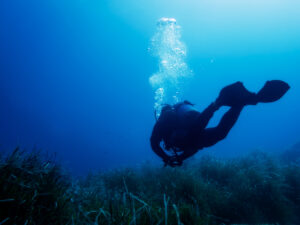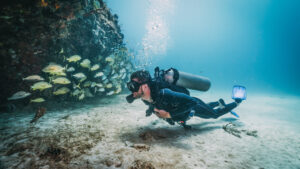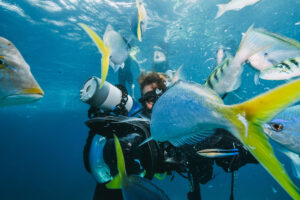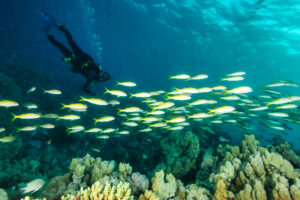What is a Scuba Diving Regulator?
A regulator is a fundamental and essential piece of equipment in scuba diving, responsible for managing the delivery of breathing gas from the scuba tank to the diver. The primary function of the regulator is to reduce the high pressure of the compressed air or mixed gas in the tank to an ambient pressure that is safe and comfortable for the diver to breathe. This entry aims to provide an in-depth understanding of the various components of a scuba diving regulator, its history, and the different types of regulators available in the market.
History of the Regulator
The concept of a regulator can be traced back to the 19th century when inventors were experimenting with underwater breathing apparatuses. In 1860, Benoît Rouquayrol and Auguste Denayrouze developed a demand regulator for use with their diving equipment. The modern scuba regulator, however, was invented in 1943 by Émile Gagnan and Jacques Cousteau. They named it the “Aqua-Lung,” and it revolutionized underwater exploration by allowing divers to breathe underwater comfortably and efficiently.
Components of a Regulator
A scuba diving regulator typically consists of several interconnected parts, each serving a specific function:
First Stage
The first stage is the component that connects directly to the scuba tank valve. It reduces the high pressure of the gas in the tank (typically between 2000 to 3500 psi, depending on the tank’s pressure rating) to an intermediate pressure (approximately 140 psi above ambient pressure). The first stage operates using one of two mechanisms: a diaphragm or a piston.
Second Stage
The second stage further reduces the intermediate pressure to an ambient pressure, allowing the diver to breathe comfortably. When the diver inhales, a diaphragm or a lever in the second stage moves, opening a valve that supplies the breathing gas. As the diver exhales, the exhaled air is vented through the regulator’s exhaust valve.
Low-Pressure Inflator (LPI) Hose
This hose connects the first stage to the buoyancy compensator (BC) inflator, allowing the diver to add or release air from the BC to control buoyancy.
Submersible Pressure Gauge (SPG)
The SPG is connected to the first stage via a high-pressure hose and displays the remaining pressure in the scuba tank, allowing the diver to monitor their air supply.
Alternate Air Source
An alternate air source, also known as an octopus or a safe second, is a backup second stage regulator. In the event of an emergency or if the primary second stage fails, the diver or their buddy can use the alternate air source to breathe.
Types of Regulators
There are several types of regulators available in the market, with varying features and performance levels:
Unbalanced vs. Balanced Regulators
Unbalanced regulators are more affordable and are generally suitable for shallow and recreational diving. However, as the tank pressure decreases, the breathing resistance in unbalanced regulators increases. Balanced regulators, on the other hand, maintain consistent breathing resistance regardless of the tank pressure, providing a smoother breathing experience throughout the dive.
Diaphragm vs. Piston First Stages
Diaphragm first stages use a flexible diaphragm to separate the internal components from the surrounding water, making them more resistant to contaminants and better suited for cold water diving. Piston first stages have fewer moving parts and are known for their reliability and ease of maintenance but may be more susceptible to freezing in cold water.
Environmentally Sealed Regulators
These regulators have an extra layer of protection that prevents water and contaminants from entering the first stage, making them ideal for cold water or harsh environments. Environmentally sealed regulators also reduce the risk of internal freezing, which can cause regulator malfunction.
Overbalanced Regulators
Overbalanced regulators provide progressively more breathing gas as the diver descends, compensating for the increased density of the gas at greater depths. This feature results in easier breathing at depth, enhancing the overall diving experience.
DIN vs. Yoke Regulators
DIN (Deutsche Industrie Norm) and yoke (also known as A-clamp) are two different types of fittings used to connect the regulator to the scuba tank. DIN fittings are more secure and streamlined, screwing directly into the tank valve. They are commonly used in technical and cold water diving. Yoke fittings are more prevalent in recreational diving, as they are easier to use and compatible with most scuba tanks. However, yoke fittings may not withstand the high pressures of some high-capacity tanks.
Maintenance and Care
Proper maintenance and care are crucial for ensuring the optimal performance and longevity of a scuba diving regulator:
Pre-Dive Inspection
Before each dive, it is essential to inspect the regulator for signs of wear or damage, such as cracked hoses, broken fittings, or corrosion. Also, check that the regulator is functioning correctly by taking a few breaths from it while connected to a tank.
Post-Dive Care
After each dive, rinse the regulator thoroughly with fresh water to remove salt, sand, and other contaminants. Make sure to protect the first stage from water ingress by keeping the dust cap in place during rinsing.
Storage
Store the regulator in a cool, dry place, away from direct sunlight, chemicals, and extreme temperatures. Hang the regulator by the first stage, ensuring that the hoses are not kinked or twisted.
Servicing
Regular servicing, typically every 1-2 years or after 100 dives, is essential to maintain the regulator’s performance and safety. Only qualified technicians should service regulators, as improper servicing can lead to equipment failure and potential accidents.
Choosing the Right Regulator
When selecting a scuba diving regulator, consider the following factors:
Diving Environment
Choose a regulator that suits the environment in which you plan to dive. For instance, cold water divers should opt for environmentally sealed, diaphragm-based regulators.
Performance
Consider the regulator’s performance characteristics, such as ease of breathing, consistency, and the availability of features like overbalancing.
Compatibility
Ensure that the regulator is compatible with your scuba tank and other equipment, such as choosing the appropriate DIN or yoke fitting.
Budget
Scuba diving regulators are available at various price points, with more expensive models typically offering better performance and features. Determine your budget and select a regulator that provides the best balance between cost and performance.
Key Takeaways
The regulator is a crucial component of scuba diving equipment, allowing divers to breathe comfortably and safely underwater. Understanding the different types of regulators, their components, and proper maintenance practices can help divers make informed decisions when choosing and caring for their equipment. By investing in a suitable regulator and maintaining it properly, divers can enjoy a safer and more enjoyable underwater experience.

















